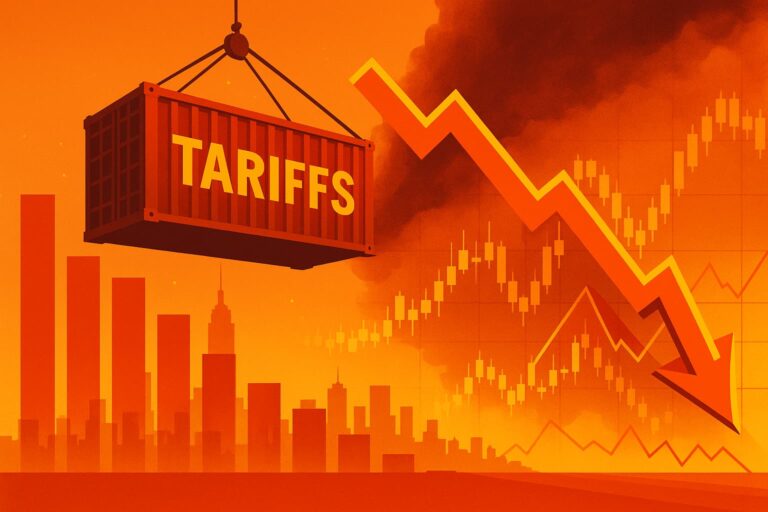As we move deeper into 2025, investors, business leaders, and everyday consumers face a market landscape shaped by three dominant forces: inflation, interest rates, and recession fears. These elements don’t just influence stock prices — they touch everything from mortgage payments to grocery bills, from startup funding to government policy.
Inflation: Still a Global Headache?
After peaking in many countries between 2022 and 2023, inflation has cooled but not disappeared. Core inflation in major economies like the U.S., UK, and Eurozone remains sticky, often hovering above central bank targets.
What’s Keeping Inflation Alive?
- Labor market tightness: Despite layoffs in tech, wage growth in services and manufacturing remains strong.
- Energy transitions: Shifting from fossil fuels to renewables has introduced supply bottlenecks and price volatility.
- Geopolitical disruptions: Conflicts and sanctions have impacted trade routes and commodity flows, especially food and energy.
Central Banks & the Interest Rate Dilemma
Central banks are stuck between a rock and a hard place. They can’t declare victory over inflation, but raising rates too high risks tipping economies into recession.
Where Do Rates Stand in 2025?
- The Federal Reserve has held its benchmark rate steady in the 4.5–5.0% range, signaling caution.
- The European Central Bank (ECB) is more hawkish due to persistent inflation in core Eurozone nations.
- Emerging markets face pressure to keep rates high to defend currencies and attract capital.
What Higher Rates Mean for You
- Mortgages and personal loans remain expensive.
- Corporate borrowing has slowed, impacting business expansion and tech innovation.
- Stock market valuations have come down, especially in rate-sensitive sectors like real estate and fintech.
The Recession Debate: Soft Landing or Storm Ahead?
Despite aggressive rate hikes since 2022, most major economies avoided a full-blown recession — for now. But the delayed effects of tighter monetary policy are starting to show in 2025.
Early Warning Signs
- Consumer credit defaults are creeping up.
- Commercial real estate is under pressure, especially in urban office markets.
- Manufacturing output has slowed in several advanced economies.
Why Some Economists Predict a Soft Landing
- Services and labor markets remain resilient.
- Government stimulus in green infrastructure and AI continues to provide tailwinds.
- Supply chains have normalized post-COVID and post-conflict.
The Bearish View
- Delayed monetary tightening effects could still hit demand hard.
- Slowing global trade and weak Chinese growth may trigger a domino effect.
- High debt levels (both sovereign and private) make the system more fragile.
Investing Through Volatility
Markets in 2025 are anything but predictable. But volatility doesn’t mean panic — it means preparation.
Portfolio Strategies to Consider
- Defensive sectors: Healthcare, utilities, and consumer staples tend to outperform during downturns.
- Dividend-paying stocks: Provide income when growth slows.
- Commodities and inflation hedges: Gold, silver, and certain REITs can offer protection.
- International diversification: Some emerging markets may outperform developed ones during monetary tightening cycles.
Practical Tips for Navigating Economic Uncertainty
For Investors:
- Don’t time the market — stick to long-term plans.
- Rebalance portfolios based on risk tolerance.
- Keep some dry powder (cash or equivalents) for buying opportunities.
For Businesses:
- Monitor borrowing costs closely; renegotiate debt if possible.
- Streamline operations and preserve cash.
- Use AI and automation to improve margins without massive hiring.
For Consumers:
- Lock in fixed-rate debt now if planning large purchases.
- Create a 3–6 month emergency fund.
- Be cautious with variable-rate credit products.
Final Thoughts: Fear or Focus?
Volatility driven by inflation, interest rates, and recession headlines can be overwhelming. But it’s essential to remember: every economic cycle brings both risk and opportunity. The key in 2025 isn’t avoiding turbulence — it’s learning to fly through it with your seatbelt fastened and your strategy in place.
Markets will shift. Narratives will evolve. But disciplined planning, a clear understanding of the macro landscape, and the right diversification can help anyone — from retail investors to CFOs — navigate the noise and stay on course.





